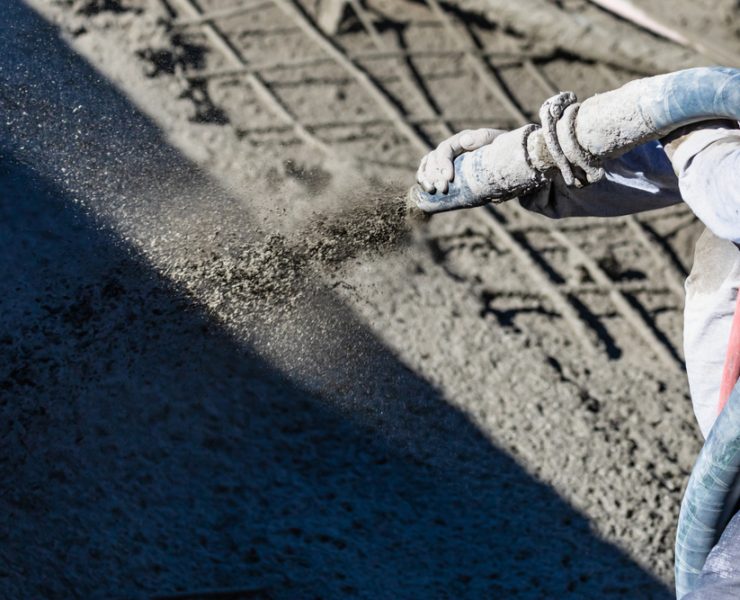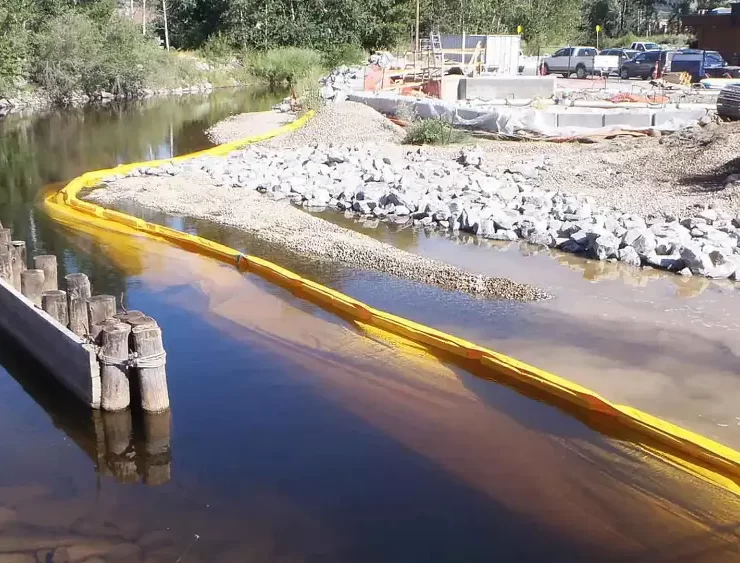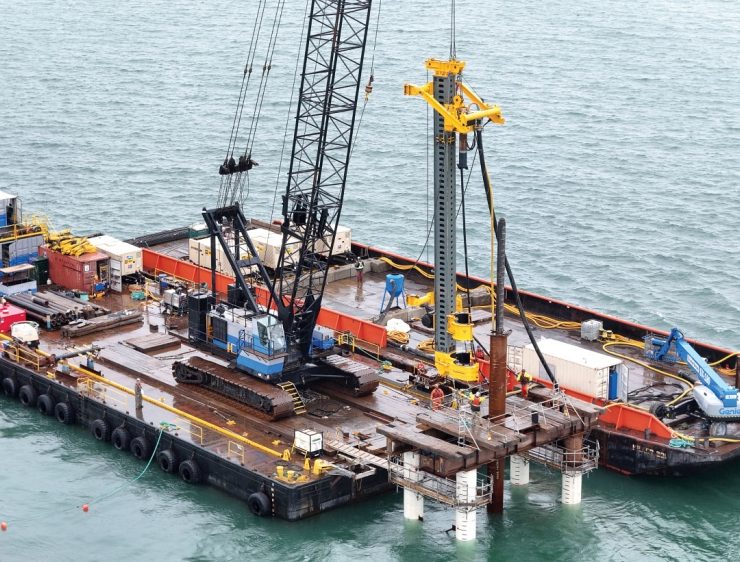Pontoon Types, Accessories, Customization, Anchors, and Connectors
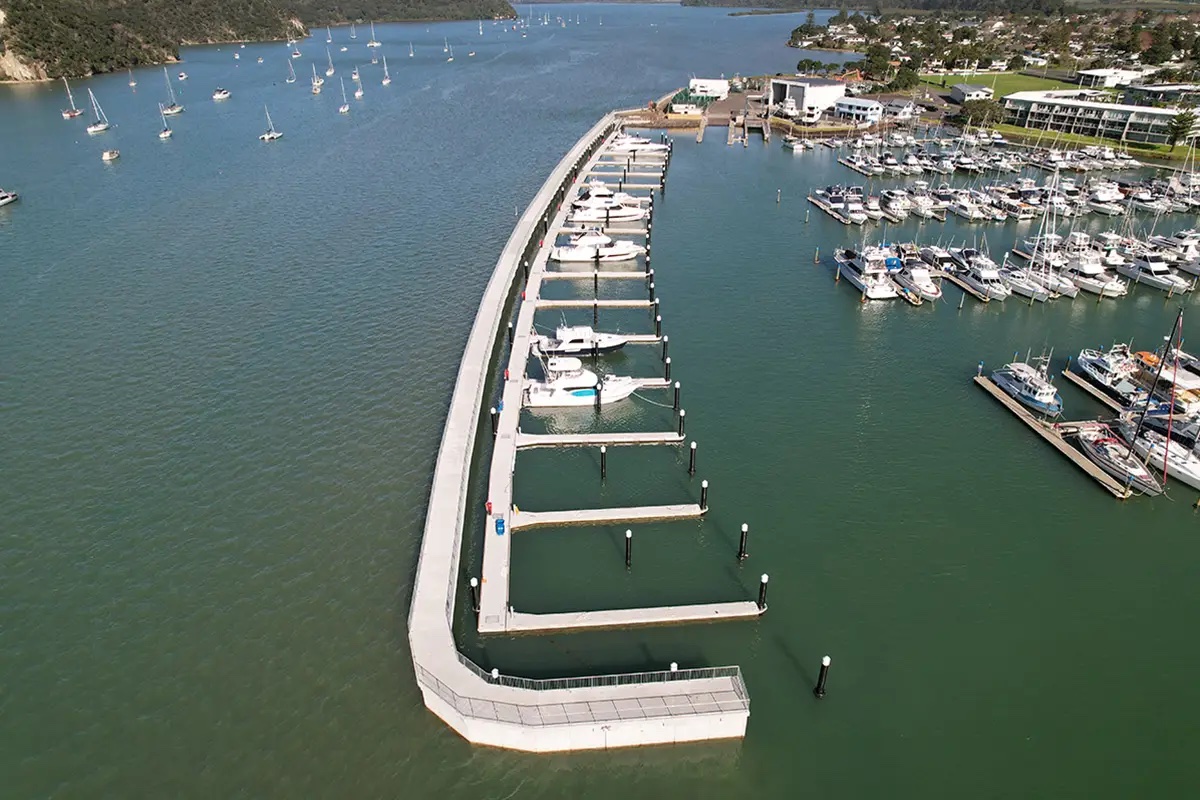

View the complete article here.
Pontoons—along with their associated accessories, anchors, connectors—have proven to be essential for marine construction and waterfront development. This guide will cover the intricate designs, robust materials, and engineering considerations that go into creating these vital marine structures. From the basic building blocks to the complex systems that ensure stability and safety, we explore how each component contributes to the resilience and functionality of marine infrastructure.
Types of Pontoons
Pontoons serve as the foundational elements in marine construction, offering versatile and reliable platforms for various applications—including floating docks, pedestrian bridges, recreational platforms, and much more. Each type of pontoon has unique features tailored to its intended use—with design considerations that ensure durability, safety, and environmental compliance.
Standard Concrete Pontoons
Standard concrete pontoons are highly regarded for their robustness and longevity. These pontoons are constructed using reinforced concrete, designed to withstand harsh marine environments. The construction process involves casting concrete around a network of reinforcing steel bars (rebar), often with a hollow core to reduce weight without compromising buoyancy. The exterior surfaces are typically treated with sealants to prevent water ingress and to protect against freeze-thaw cycles.
The advantages of concrete pontoons include:
- Durability: Concrete’s resistance to weathering, chemical erosion, and marine growth makes it ideal for long-term marine applications.
- Low maintenance: The inherent strength and resistance to abrasion reduce the need for frequent maintenance.
- Customization: The formability of concrete allows for pontoons to be cast in various shapes and sizes, accommodating specific project requirements.
Limitations to consider include:
- Weight: Concrete pontoons are significantly heavier than their metal or plastic counterparts, requiring careful consideration during transportation and installation.
- Cost: The initial construction and installation costs can be higher due to the materials and processes involved.
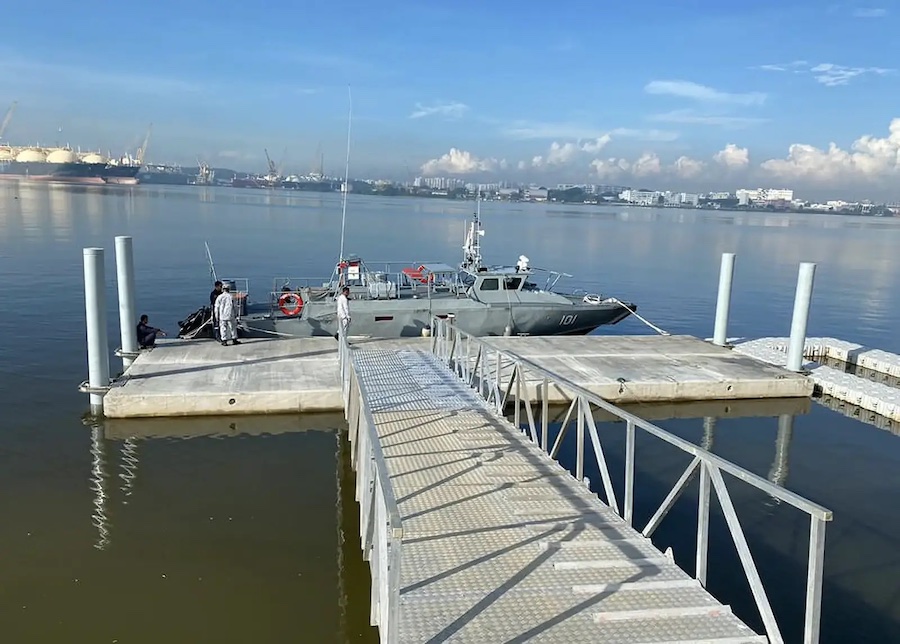
Special Pontoons
There are special pontoon options available including…
Designed to accommodate the loading and unloading of passengers and vehicles, ferry landing pontoons are engineered for stability and durability. These pontoons must withstand the impact and loads from docking ferries, often necessitating robust anchoring and mooring systems. Durability concerns, particularly wear from constant use and exposure to propeller wash, dictate the use of high-performance concrete and protective coatings. Load considerations also influence the design, ensuring that pontoons can support the weight of loaded vehicles and passenger congregations without compromising stability.
Safety is paramount for pontoons serving as fuel stations, necessitating features such as spill containment systems and fire suppression equipment. Environmental protections are integrated into the design to prevent fuel leaks and spills from contaminating the surrounding waters. Construction materials for these pontoons are selected based on their resistance to chemicals and their ability to withstand the corrosive effects of fuel and marine environments.
Helicopter and seaplane platforms are uniquely designed to accommodate the dynamic loads of landing and taking off aircraft. Key design criteria include size, to ensure ample space for operations—and stability, to minimize movement from waves and wind. Materials used in construction must provide a non-slip surface for safety and be resistant to fuel and oil spills. The pontoons are also designed to feature low profiles to prevent interference with aircraft rotors or wings.
Septic platforms on pontoons are an innovative solution for waste management in remote marine locations. These platforms must comply with stringent environmental regulations—incorporating systems for the safe collection, treatment, and disposal of wastewater. Construction and maintenance practices emphasize durability and ease of access for servicing, with materials selected for their resistance to the corrosive nature of septic contents and the marine environment.
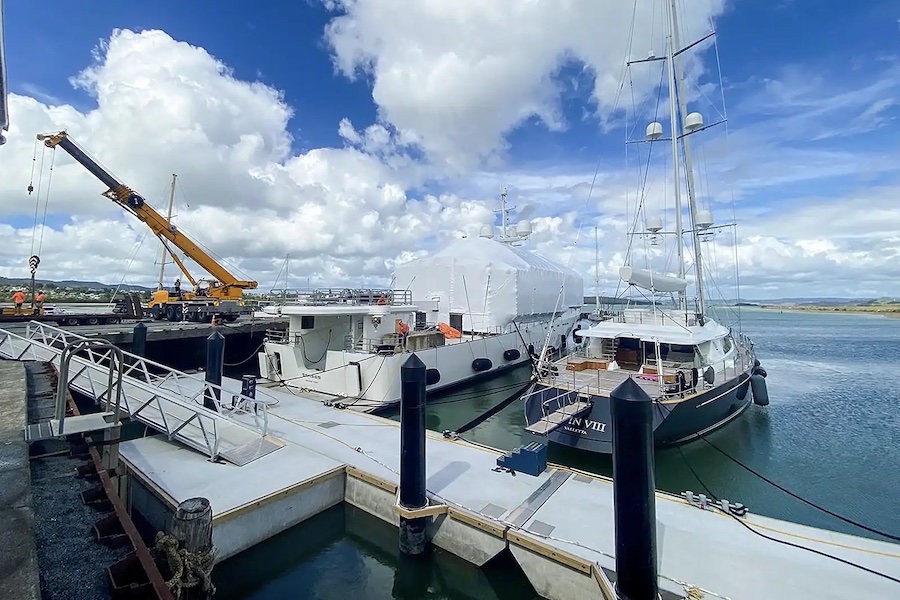
Pontoon Accessories
Pontoons provide the foundation for marine activities, but it’s the accessories that enhance their functionality and safety.
Decking
Decking for pontoons comes in a variety of materials such as natural wood, which provides a traditional maritime aesthetic but requires regular maintenance to resist the elements. Composite decking is a popular alternative due to its durability and minimal upkeep, closely emulating the look and feel of wood. Aluminum decking is valued for its lightweight nature and resistance to corrosion, making it suitable for industrial settings. For heavy-duty applications, concrete decking provides unmatched longevity and strength. The choice of decking material is determined by the pontoon’s intended application, environmental conditions, expected foot traffic, and the maintenance regime that can be sustained over its lifetime.
Gangways
Gangways ensure the accessibility and safe embarkation and disembarkation from pontoons. They must be designed to handle the expected traffic and adapt to varying water levels and conditions. Aluminum is favored in their construction for its combination of strength and lightness, while galvanized steel is chosen for its endurance against wear-and-tear. Safety is enhanced with the inclusion of anti-slip surfaces, sturdy handrails, and adequate lighting—especially in areas that experience high volume or extreme weather conditions.
Mooring Fingers
Mooring fingers extend the mooring capacity of pontoons, providing a secure point for vessels to “tie up.” These can be configured as single or double-sided extensions, tailored to the layout of the marina and the types of vessels it accommodates. Materials for mooring fingers often mirror those of the main pontoons, with a focus on durability and ease of maintenance. Considerations for their design include the anticipated load from vessels, the environmental stressors present, and the ease of access for mooring and unmooring activities.
Utilities
The integration of utilities such as water, electricity, and data connections into pontoon systems is essential for modern marine facilities. These must be installed with a focus on safety and reliability, utilizing marine-grade materials and following strict installation codes. Best practices dictate that all electrical and water systems should be well-insulated, protected from the elements, and easily accessible for maintenance—while data connection points should provide a secure and consistent connection for marina users.
Safety Equipment
Safety equipment is mandatory for any pontoon installation—encompassing life rings, fire extinguishers, adequate illumination, and clear signage. Compliance with both local maritime safety regulations and international standards is not just a legal requirement but a moral imperative to ensure the wellbeing of all marina users. Regular audits and equipment checks are essential to maintain these standards and provide a safe and secure marine environment.
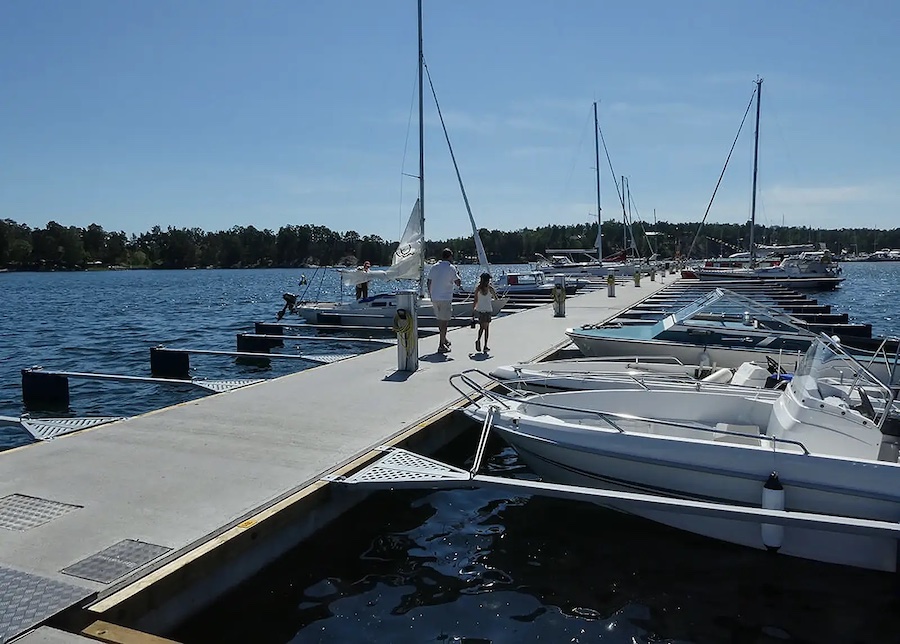
Anchors and Connectors
In the floating architecture of pontoons, anchors and connectors play a pivotal role in securing and assembling these structures.
Pile Guides
Pile guides are essential for maintaining the position and stability of pontoons. They are designed according to the specific applications, whether for private docks or commercial marinas—and are constructed to allow for a degree of movement while ensuring the pontoons remain secure. The material choices for pile guides often include galvanized steel or reinforced plastics, both selected for their resistance to corrosion and ability to withstand the marine environment.
Anchoring Systems
The anchoring systems used for pontoons can vary widely, from traditional mushroom anchors to more complex deadweight and screw systems. The selection of an anchoring system is critical and must account for factors such as water depth, bottom conditions, as well as the potential for environmental changes like tides and currents. These systems ensure pontoons hold their position effectively, even in challenging conditions.
Connector Systems
Connector systems are what allow pontoons to form larger structures and attach securely to the shoreline or seabed. These systems can range from flexible hinges to rigid connections, depending on the need for mobility and the forces they need to withstand. The type of connector chosen must suit the specific conditions of the site and the expected loads, ensuring a secure yet adaptable pontoon structure.
Final Thoughts
When it comes to pontoon construction, adherence to engineering standards and best practices is non-negotiable. These structures must be designed with meticulous load calculations to ensure they remain buoyant and stable under various conditions. Engineers must conduct thorough stability analyses to anticipate and mitigate potential issues that could compromise integrity.
The environmental impact of construction projects in marine settings is also a critical consideration. Impact assessments evaluate the potential effects on local ecosystems, water quality, and sediment patterns. Sustainable design principles are employed to minimize adverse effects, ensuring the marine environment is preserved for future generations.
View the complete article here.
What are the advantages and limitations of using standard concrete pontoons in marine construction?
Standard concrete pontoons offer durability, low maintenance, and customization but come with the limitations of significant weight and potentially higher initial costs.
What safety features are essential for pontoons serving as fuel stations, and how are they designed to prevent environmental harm?
Safety features for fuel station pontoons include spill containment systems and fire suppression equipment, with designs incorporating environmental protections to prevent fuel leaks and spills.














